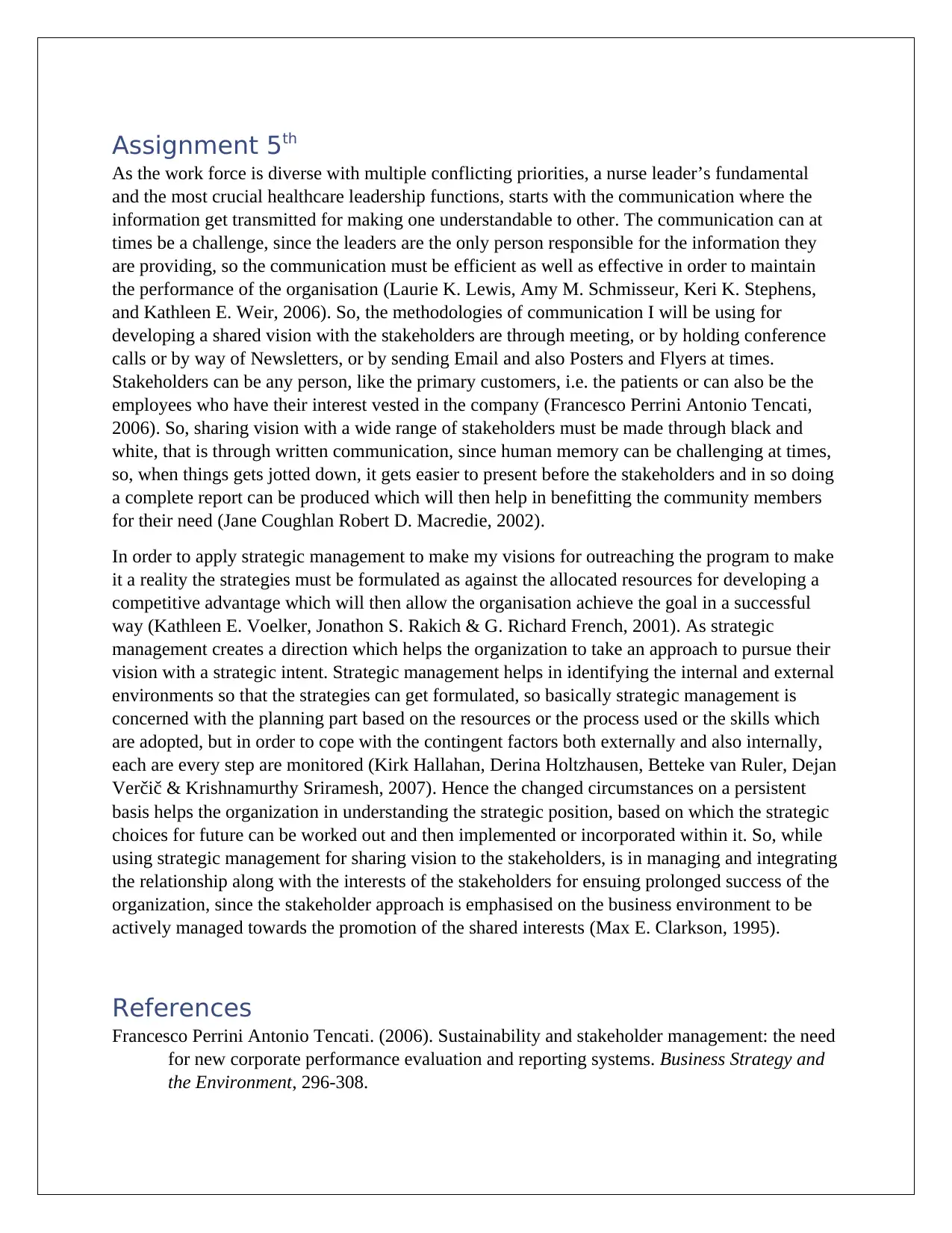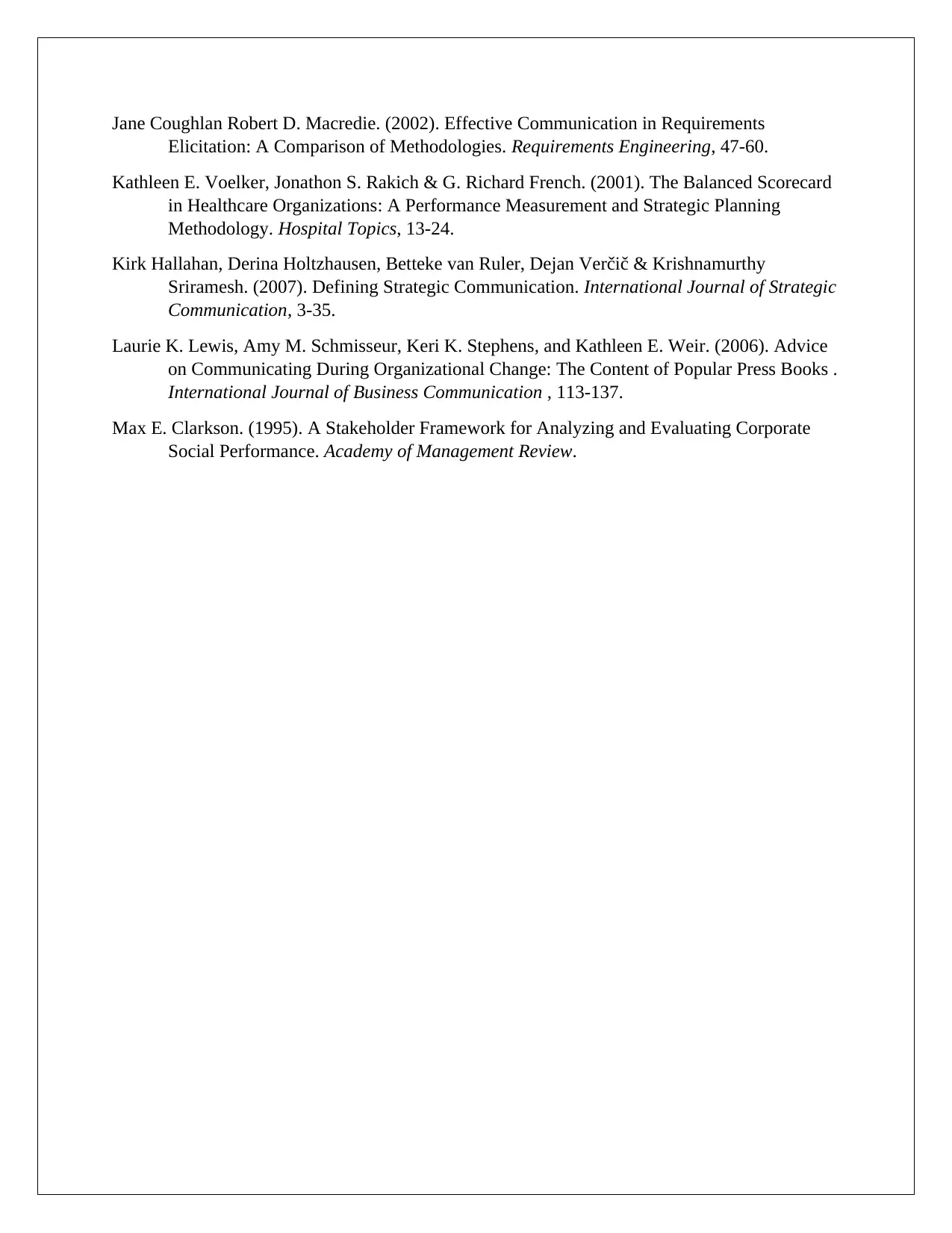Communication Strategies in Nurse Leadership for Stakeholders
VerifiedAdded on 2019/09/30
|2
|737
|155
Report
AI Summary
This report delves into the critical role of communication in nurse leadership, emphasizing its importance in fostering a shared vision among stakeholders. The report highlights various communication methodologies, including meetings, conference calls, newsletters, emails, and posters, as effective means of disseminating information. It stresses the significance of written communication for clarity and documentation, particularly when engaging diverse stakeholders such as patients and employees. The report also explores the application of strategic management principles to achieve organizational goals, focusing on resource allocation and competitive advantage. It underscores the importance of strategic management in identifying internal and external environments, formulating strategies, and adapting to changing circumstances. Furthermore, the report emphasizes the stakeholder approach to ensure the long-term success of the organization. The report concludes by referencing several academic sources to support its findings.
1 out of 2








![[object Object]](/_next/static/media/star-bottom.7253800d.svg)